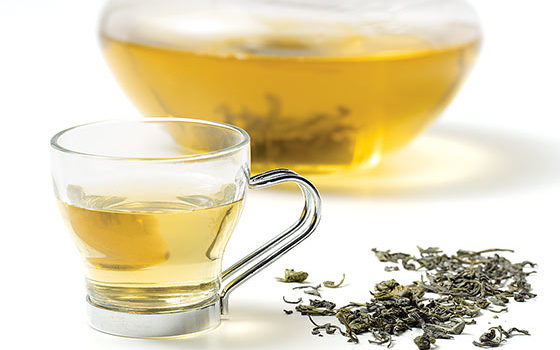While Indians are known for their knowledge of black tea, the Japanese have perfected the art of green tea. They produce the world’s best green teas, which are among the finest and most popular teas on the planet. Of course, the specific characteristics of each production area, the various traditions, cultivation methods and harvesting season all influence the quality and consistency of the tea. Here are three Japanese green teas: mixed with roasted rice (genmaicha), stone-ground (matcha) and shade-grown tea (gyokuro).
Genmaicha
This green tea is a Japanese speciality. Roasted rice is added to whole sencha leaves (tea plants grown in sunlight). Genmaicha is easy to prepare and makes an excellent breakfast tea with an aroma and flavour that nearly everyone loves. Liquid: The roasted rice cuts through the bitterness. Produces a pleasant yellow-green, aromatic liquid. Often served in sushi restaurants. A great choice for people who are unfamiliar with the bitter taste of green tea. Quantity: 10 g/500 mL water Water temperature: 80 °C (small bubbles just before reaching a rolling boil) Infusion time: 4 or 5 minutes
Matcha
Matcha tea is hundreds of years old. It is a pure Japanese matcha tea plants (lower grades of matcha are made from Chinese teas or bad sencha). This powdered tea provides a real energy boost. Unlike loose-leaf tea, matcha powder is not filtered out of the tea, giving it a thicker, richer texture—it’s like your daily dose of greens. It has a vibrant, emerald-green colour and all the antioxidant properties of loose-leaf Japanese green tea. Prepare matcha by whisking the powder in a bowl of hot water until a layer of foam forms on the top. You can also prepare it in the more modern Japanese fashion—cold and sweet, with soy milk. Delicious! Liquid: Green, very earthy, very intense, bitter Quantity: 2 g (½ tsp.)/250 mL (8 oz.) very cold vanilla soy milk Water temperature: 70 °C (steaming) for hot matcha Infusion time: For hot or cold matcha, just whisk and serve!
Gyokuro
Gyokuro is covered before harvest and gets its beautiful dark-green colour from the lack of light, which causes the plants to produce more chlorophyll. It is a premium, luxury tea that Japan is famous for. Japan’s island geography gives its teas their distinct taste. Japanese green tea is also recognized for its high levels of antioxidants. That’s why it’s known as the king of green tea. Liquid: Artichoke colour, fresh aroma, creamy with a flavour that tastes mildly like spinach. Quantity: 8 g/500 mL water Water temperature: 75 °C (steaming). This tea should be made with slightly cooler water than some other teas. Infusion time: 4 minutes

